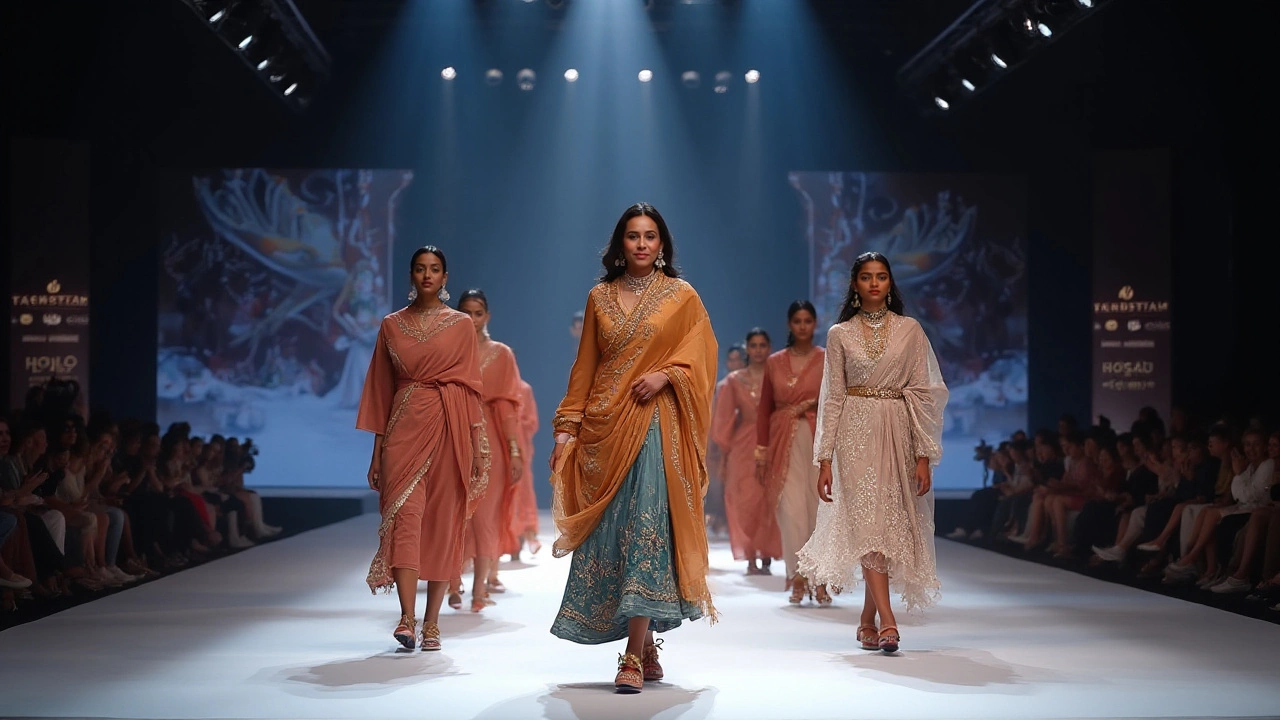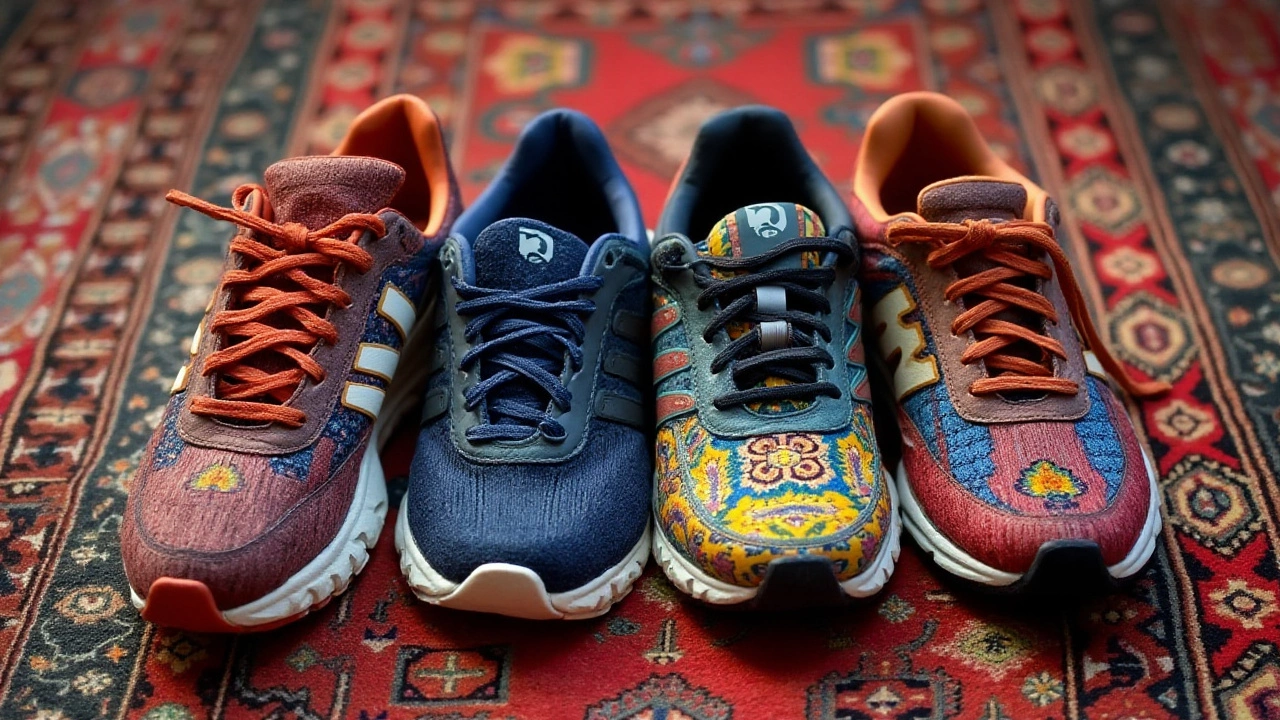When you think of trainers, your mind might drift to the athletic shoes that dominate the sneaker market today. But these versatile footwear choices offer so much more than just comfort during exercise. From the basketball courts of the past to the bustling city streets, trainers have defined and redefined themselves over decades.
Trainers, often interchanged with terms like sneakers, are an essential part of not just sporting activities, but everyday fashion. They come in various designs, each tailored to fit specific sports or lifestyle needs, blending functionality with aesthetics. Navigating through these options can often feel overwhelming, but understanding the basics can guide you toward making an informed decision. Whether you're on a quest for performance or style, knowing what constitutes a great pair of trainers is key.
- History of Trainers
- Different Types of Trainers
- Materials and Technology
- Style and Fashion Influence
- Choosing the Right Trainer
History of Trainers
The story of trainers stretches back more than a century, setting its roots in a time when the need for specialized footwear in sports became apparent. In the late 19th century, with more people engaging in athletic activities, there was a growing demand for shoes that could provide better grip and flexibility. Enter the plimsoll, a simple shoe with a canvas upper and rubber sole invented to cater to gymgoers and athletes. These were the precursors to the modern trainer, embodying the spirit of innovation that would continue to define athletic shoes for generations to come.
The term “sneaker” became popular in the early 20th century, particularly when companies like Keds started mass-producing shoes crafted for comfort and stealth, attributing their name to the 'sneaky' sound they didn't make. As the 1920s rolled around, the creation of the Converse All-Star was a turning point, becoming the quintessential high-top basketball shoe and an icon in its right. During this era, trainers became synonymous with athletes, gaining credibility in sports environments across the globe.
Fast forward to the post-war boom of the 1950s and 60s, when brands like Adidas and Puma emerged, taking trainers into the realm of global sports fame. Their advent marked the beginning of the brand wars we still see today, each vying for a share in the lucrative sports and lifestyle market. These decades set the stage for trainers being not just a tool for athletic performance but also a cultural and fashion statement. By the time the 1970s rolled around, people were not just wearing trainers for sports but also as a part of their everyday wardrobes, signaling a shift towards casual culture.
As we delved into the 1980s and 90s, the landscape of trainers was transformed by advancements in technology and design. The Air Jordan phenomenon, launched by Nike, is perhaps the most iconic instance of when a trainer transcended its functional roots to become a cultural symbol, leading to the modern-day sneaker culture. From that point, trainers were about individual expression as much as about enhancing athletic performance. This trend was further supported by technological breakthroughs like Air Sole units and Gel cushioning, which revolutionized how comfort and performance were perceived.
Today, trainers are an undeniable global phenomenon, continuously evolving with advances in materials like knit fibers and groundbreaking cushioning systems. They are a blend of function and fashion, celebrated in both athletic and social arenas. The journey of trainers from modest plimsolls to must-have lifestyle icons underscores a narrative of innovation, ambition, and cultural significance. "The secret of success is to do the common things uncommonly well," Andrew Carnegie once said, and it rings true for trainers, which have become a testament to how far a simple idea can go when nurtured with creativity and purpose.
Different Types of Trainers
When it comes to trainers, the sheer variety can leave anyone feeling a bit overwhelmed. Each type serves a specific purpose, crafted with features that cater to different needs, from enhancing athletic performance to providing casual comfort. A fundamental understanding of these distinctions can be a game-changer, influencing both your footwear choice and your performance.
First off, we have running shoes, often considered the epitome of athletic footwear. They are designed for forward motion, with an emphasis on cushioning that absorbs the impact of each stride. A common feature is the high heel-to-toe drop, which supports the heel strike, typical in running gait. A well-cushioned insole optimizes comfort, preventing fatigue over long distances. Despite their performance-focused design, they've crossed over into fashion, becoming a staple in many wardrobes. Their silhouette has inspired countless designs on and off the track.
Next, the category of walking trainers offers a different kind of support. These are tailored for stability and comfort over longer periods. While they might look less flashy, their plain aesthetics belies a structure designed to reduce strain during prolonged usage. The heel is often lower and less cushioned compared to running shoes, focusing more on a smooth heel-to-toe transition. A breathable upper encourages airflow, reducing perspiration buildup. Walking shoes might seem less glamorous, but they offer comfort for everyday hustle or leisurely strolls.
Specialized Trainers
Moving further into specialization, consider cross-trainers, a versatile option for those that engage in various activities. Designed to be a jack-of-all-trades, these trainers offer a blend of features from various disciplines. They might provide the lateral support of a tennis shoe and the cushioning of a running shoe, making them suitable for gym workouts, aerobics, and even some team sports. Their versatility makes them a popular choice for those who prefer a single shoe for multiple activities.
Then there are basketball shoes, designed with a focus on ankle support and shock absorption critical for the dynamic movements in the game. Their design is dictated not just by function, but also by culture. Brands often collaborate with athletes, influencing both function and street style. These trainers boast high tops for stability, thick soles for grip, and ample ankle padding. Their robust construction often draws attention off the court, blending performance with cultural significance.
"Sneakers are not just a symbol of fashion or athleticism but a cultural reflection of society." - Eric Adams, Sneaker Culture Analyst
The realm of trainers doesn't stop there. You also have minimalist shoes, which gained traction among those eager to embrace barefoot-style running. These trainers often feature a thin sole and little to no heel drop, encouraging a forefoot strike. They appeal to those seeking a more natural running gait, but they require a careful transition to avoid injury.
Lastly, lifestyle sneakers, though an offshoot of athletic designs, are constructed with modern aesthetics at the forefront. They prioritize looks and urban style, yet many blend traditional athletic features for enhanced comfort. From iconic retro looks to sleek modern designs, they cater to fashion-forward individuals who crave style without sacrificing on comfort. As you can see, whether you need performance-centered or style-conscious trainers, there’s an option tailored for every foot and every occasion. Choosing the right one might not be straightforward, but it's a journey worth exploring.

Materials and Technology
When it comes to the world of trainers, the material composition and technology underneath your feet make all the difference. Modern athletic footwear is a marvel of engineering, designed to support and protect while providing maximum performance and comfort. Companies invest heavily in researching new fabrics, materials, and construction techniques that cater to diverse needs, from casual jogs to professional sports. The materials chosen can influence the shoe's durability, flexibility, weight, and breathability, striking a fine balance between being lightweight yet sturdy.
The most common materials include synthetic textiles, leather, and mesh. Each material serves a specific purpose. For instance, mesh is a popular choice for its breathability, essential for high-impact sports where sweat management is crucial. Leather, prized for its durability and classic appeal, often features in sneakers meant for everyday wear. Meanwhile, synthetic textiles are favored for their ability to mimic natural materials while offering greater flexibility and resistance to moisture. Behind these materials, brands incorporate cutting-edge technology, such as Nike's Flyknit, which uses a single thread to create virtually seamless shoes, reducing waste and improving fit.
It's not just about the exterior materials, but what lies beneath. The midsole technology, which provides cushioning and support, is another focal point. Companies utilize a range of innovative materials like EVA (Ethylene Vinyl Acetate) or TPU (Thermoplastic Polyurethane) for midsoles that offer excellent shock absorption and energy return. This is crucial not just for high-performance athletics but also for casual wearers who spend extended periods on their feet. Many brands, such as Adidas with its Boost technology, have made a name by perfecting this aspect of shoe technology.
According to Shoe Producer Magazine, "A significant part of a trainer's appeal lies in its ability to integrate technology seamlessly into its design – turning fabric and rubber into a tool for performance and style."
"Innovation in trainer technology is not just about selling shoes; it's about enhancing the experience of every step," claims an industry expert.This quote encapsulates the ethos of the modern sportswear market, where style and functionality coexist. Whether you're preparing for a marathon or simply heading out for groceries, trainers are engineered to adapt to your needs.
| Material | Advantages |
|---|---|
| Mesh | Breathability, flexibility |
| Leather | Durability, classic style |
| Synthetic Textiles | Flexibility, moisture resistance |
As technology in the field advances, expect to see more eco-friendly options. Many brands are adopting sustainable practices, using recycled materials and reducing wastage in the manufacturing process. This not only caters to an environmentally-conscious market but also ensures that your pair of trainers is part of a larger conversation about sustainability in fashion. Understanding what goes into your trainers can transform the way you select your next pair, ensuring you make choices that suit not just your feet, but your values as well.
Style and Fashion Influence
The world of trainers has expanded far beyond their humble beginnings as simple athletic shoes. Over the years, they have emerged as a central element in global fashion, bridging the gap between street style and high fashion. This evolution mirrors cultural shifts and the growing emphasis on blending comfort with trendsetting aesthetics. Celebrities and influencers alike have been pivotal in catapulting trainers from gym accessories to coveted style statements—a transformation that has seen designers collaborating with athletes and pop culture icons. The result is a dynamic landscape where footwear continually sets fashion forward trends.
In the pages of history, the 1980s marked a significant turning point when the rise of hip-hop culture placed trainers in the center of attention. Icons like Run-D.M.C. famously ditched laces, opting for a more nonchalant approach to wearing trainers and forever influencing urban style. Celebrities like Michael Jordan also played a crucial role, as his partnership with a major shoe brand revolutionized the perception of athletic shoes. Suddenly, sneakers or trainers became more than functional items; they became symbols of status and lifestyle, sparking a fervor for collecting and customizing these must-have pieces.
The fusion of technology and fashion has brought about intriguing collaborations between sportswear companies and luxury fashion houses. This partnership often results in limited-edition releases that straddle the line between performance and prestige. A noteworthy mention is the collaboration between high-fashion label Balenciaga and running shoe giant Nike, where cutting-edge design meets performance-driven technology. Such instances highlight how the boundaries of fashion, technology, and athleticism are increasingly intertwined, creating products that appeal to a diverse audience.
In recent years, sustainability has become a keyword in fashion, and trainers are at the forefront of this movement. Many companies have committed to using recycled materials, eco-friendly production techniques, and cruelty-free supplies to produce trainers that are as responsible as they are stylish. This shift towards eco-conscious footwear resonates with a growing demographic that values ethical consumerism. Consequently, brands that once solely focused on aesthetics now invest heavily in research and development to innovate within green and sustainable frameworks.
Renowned fashion designer Virgil Abloh once stated, "Sneakers are a great medium for culture. They're at the intersection of music, politics, and youth, providing a canvas for personal expression."
It’s clear that the influence of trainers extends far beyond their athletic origin. They are a reliable indicator of trends, serving as a canvas for creativity and cultural representation. Each intricate detail, from the outsole to the shoelace design, can make a statement about individuality, social movements, and lifestyle choices. As more people embrace trainers in diverse spaces, from casual outings to sophisticated events, the once-niche market is now cemented as an integral part of the contemporary fashion lexicon. It’s a testament to the transformative power of style as it adapts to and influences the world around it.

Choosing the Right Trainer
Navigating the sea of options when it comes to choosing the right trainer can be both exciting and daunting. With a myriad of designs and technologies at play, each promising to enhance your life in different ways, how do you really decide what's best for you? The decision boils down to understanding your personal needs, whether it's for running marathons or simply strolling through parks. The first step is to clearly identify the intended use of the trainers. Are you into high-intensity training or other specialized sports such as basketball or soccer? Or maybe you're looking for something that excels in casual comfort and style? Once this is clear, you can narrow down what fits your lifestyle seamlessly.
Knowing the Materials
Paying attention to the materials used in a trainer can save your feet from discomfort. Typically, trainers are crafted from a combination of synthetic fabrics, leather, and mesh, each having its purpose. For instance, breathable mesh is ideal for those hot, sweaty run days, offering much-needed ventilation. Conversely, leather may present a sturdy option for those seeking a more durable and stylish kick. The sole’s material is equally crucial, with varying options like rubber or foam. High-quality rubber ensures grip and durability, while foam may offer lighter, responsive cushioning. Understanding these nuances helps tailor your choice to a level of unparalleled comfort and performance.
Key Features to Consider
The world of athletic shoes is brimming with innovative technologies, and trainers are no exception. From shock absorption to arch support, pinpointing what's essential for your foot type can make a world of difference. Arch support, for example, can alleviate the discomfort for those with flat feet or high arches. On the other hand, shock absorption becomes critical in reducing the impact on your joints during intense activities. Not to forget, many trainers today are designed with motion control technology, a boon for those needing extra stability. It's about knowing your foot anatomy and aligning it with the shoe's offerings.
According to a study by the American Orthopaedic Foot & Ankle Society, around 60% of people don’t wear shoes that fit properly, often leading to discomfort and foot pain over time.
Trying Before Buying
In an age where online shopping reigns supreme, physically trying trainers in-store might seem like a cumbersome task, yet it remains invaluable. Experiencing the fit firsthand ensures you aren't stuck with a pair that looks good but feels utterly torturous. When trying on trainers, consider the socks you'd typically wear and wear them during this process. Tie the laces as you normally would and take a walk around the store. Pay attention to any pinch points, sliding heels, or toe space, ensuring a snug yet comfortable fit. Most importantly, indulge in multiple tests, hopping or running slightly if necessary to genuinely gauge the comfort and support offered.

